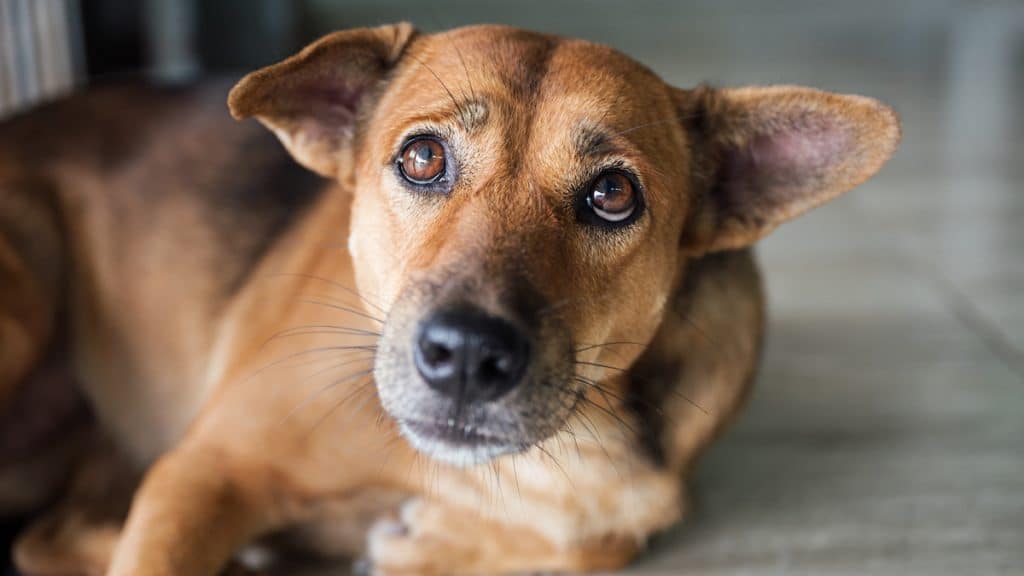- Not a substitute for professional veterinary help.
You just found the most adorable stray dog. Now what? How can you help him find his way home (or to a new furever home)? Taking in a stray dog isn’t always straightforward or easy. That’s why we spoke to a professional animal behavior consultant with years of experience working with shelter dogs in Texas. With her help, we’ve put together a guideline on what to do if you ever encounter a stray.
What to Do With a Stray Dog
When finding a stray dog, the first step is to ensure they’re not actually runaways who already have a home. If that leads to a dead end, you can search different local groups before contacting an animal shelter. We lay out the steps in more detail below with the help of Amy Fitzsimmons, CBCC-KA and CDBC, animal behavior consultant and owner of Dog Possible. Fitzsimmons has also worked extensively with rescue dogs in Austin, Texas, and holds a shelter behavior certification through the International Association of Animal Behavior Consultants.
Check tags and microchip
Check to see if the dog has tags. If they don’t, you can take the stray dog to a local animal shelter or veterinary clinic and have them scan for a microchip. “It can also be helpful to knock on a few doors in the area where the dog was found to see if anyone recognizes him or her if you feel safe doing so,” adds Fitzsimmons.
Check local groups
If you’ve followed these steps but still haven’t found the dog’s family, Fitzsimmons says to post on lost and found pet groups and neighborhood groups specific to your area. “File a found report with your local municipal shelter and inquire about what resources and guidance they can offer, including whether or not they have a ‘finder to foster’ program,” she adds. “Post flyers in the area where the dog was found.”
When reuniting the dog, Fitzsimmons advises to ask for proof of ownership. “Photos of the dog are an easy way to verify that he or she does belong to the person claiming the dog,” she says.
Contact your local shelter
If the dog is not promptly reunited and you’re unable to take in a stray, a shelter is the next step. “Your local shelter can help advise you on next steps, whether that is surrendering the dog there or finding placement through other means,” says Fitzsimmons.

Rustic Wanderlust via iStock
Should You Feed a Stray Dog?
When finding a stray dog, your first impulse to help them may be to give them food. But Fitzsimmons warns that sometimes feeding them can do more harm than good depending on what kind of condition they’re in. “If the dog is emaciated or appears otherwise medically fragile, take the dog to the vet immediately rather than attempting to feed him or her,” she says. “Feeding a severely underweight dog or a dog with unknown medical needs without appropriate guidance can cause refeeding syndrome or other potential issues.”
Using food to catch a stray
If using food to lure the stray dog to you, Fitzsimmons says to toss the food away to provide distance from you if the dog seems fearful. Instead of trying to feed them by hand, let them choose to close the distance when they’re comfortable enough.
Use precautions, too, when feeding, as you won’t know the dog’s behavioral history. “If you are feeding the dog out of a dish, avoid touching them or the dish while they are eating to prevent the possibility of resource guarding,” says Fitzsimmons.
If it seems unlikely that you can catch the dog, call your local animal control agency for help.
Taking in a Stray Dog
Before considering adopting a dog you’ve found, Fitzsimmons says it’s crucial to do your due diligence to ensure they don’t already have a family that wants them back. “A found dog may be a pet that has somehow gotten loose or lost, or a dog whose owner does not appropriately contain him or her and allows the dog to roam,” she says.
If no family is found, she advises giving the dog proper vet care and getting them up-to-date on vaccinations. “If you have other pets, keep the new dog separate until he or she is medically cleared,” she adds. “As with any dog who is new to the home, take things slowly, allowing the dog to decompress and get comfortable and meet people and other pets in a safe, structured way.”
However, if you’re not equipped to take on the care of a stray, that’s okay, too—that’s why animal agencies exist. And remember, you can always reach out to other dog lovers for help!




